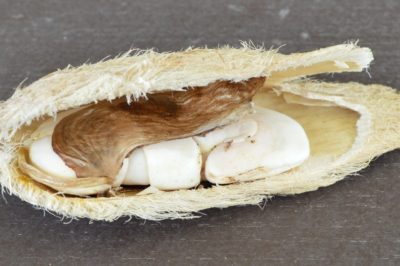Types of Mangos
Mangos are divided into two races: Indian and Indochinese. Each type tolerates different climate conditions and produce seeds with differing growth habits, which determine what you type of fruit you are most likely going to harvest.
Indian Mangos
The fruit of Indian mangos are generally more colorful than Indochinese types and fruit shape is more regular. Some of the qualities of these type of mango trees include:
- Doesn’t tolerate humid conditions as well as Indochinese types.
- More susceptible to mildew and anthracnose.
- Produces monoembryonic seeds, which means the seedlings won’t necessarily resemble the parent tree due to hybrid crossing. The fruit produced can be equal, superior or not as good as the fruit from the parent tree.
Indochinese Mangos
The fruit from Indochinese mangos are less colorful than Indian types, and are usually more greenish and yellow, and elongated. Some qualities of these types of mango trees include:
- Tolerates wetter and more humid conditions.
- Is relatively resistant to mildew and anthracnose.
- Produces polyembryonic seeds, which means seedlings are the same as the parent tree and the fruit will be of the same quality. The seed can produce more than one seedling.
Preparing the Seed for Planting
When selecting a mango seed for planting, it’s best to use seed from fully ripe fruit. Using seed from mangos purchased at the grocery store isn’t advisable, because many times the seeds won’t germinate due to age or chilling. Your best bet is taking seed from fresh mangos purchased at your local farmer’s market or from a local tree. Prepare your fresh seed as follows:
- Remove all the flesh surrounding the seed.
- Being careful not to cut yourself, use a sharp knife and cut around the outside of the seed’s husk to reveal the inner, kidney-shaped kernel.
- Use caution not to cut into the kernel and it should easily slip out of the husk. Once the kernel is removed, plant immediately.
Expert Tip: Removing the kernel from the husk isn’t necessary, but it speeds up germination. Do not let the mango seed dry out. If you can’t plant the fresh seed right away, bury it in moistened soil until you can plant it in a container.
Planting the Mango Seed
Once you’ve prepared the mango seed, it’s time to plant. Seeds planted in warm, tropical climates should germinate in approximately two weeks. Those living in cooler climates should see their seeds germinate in about three weeks. Mango trees grown from seeds take approximately six years to start producing fruit.
- Fill a 3-gallon container (11 liters) with a well-draining potting mix. Be sure the container has bottom drain holes or the seed will rot. Water the soil to settle it before planting the mango seed.
- Gently push the mango seed into the center of the soil, pointy side down. Allow about 1/4 inch of the top, hump portion of the seed to remain out of the soil. Water again.
- Place the container in a warm, partially sunny location and water when the top inch of soil becomes dry.
Expert Tip: Starting the seed in a larger container allows the seedling to grow for a year or more without the need to transplant due to it outgrowing the pot. After approximately four months, the mango should have a developed root system.
Cultural Needs for Transplanting
Once your mango seedling reaches at least 2 feet tall, you can transplant it into the landscape. Mangos prefer a frost-free climate, but those living in cooler areas can grow their tree in extra-large containers and bring the tree into a protected location during winter. If you plan on adding to your garden, consider the following for the best growth and fruit-production:
- Plant in a sunny site away from the interference from other larger trees, structures or powerlines, as mango trees grow up to 60 tall and 40 feet wide at maturity.
- Mango trees tolerate a wide range of soils provided they drain well. Plant on a 3- to 4-foot high mound, if your selected area is prone to flooding.
- Select the warmest area of your landscape to plant the mango.
- Plant the mango in a clean site that is about 3 feet in diameter. Keep the site weeded, as the unwanted vegetation robs the mango tree of nutrients and moisture.
- Plant the mango seedling at the same depth it was growing inside its container.
- Water the newly planted mango every other day for several weeks and then cut back to twice weekly for several months. After the root system establishes itself into the planting site, weekly applications of water are sufficient.
Expert Tip: Although mango trees are broadleaf evergreens, they seem to have a habit of dropping leaves creating litter. They also will drop dead branches and ripe fruit, which is a treat to local wildlife like squirrels. Consider planting in a location where the dropped litter doesn’t create an eyesore.
